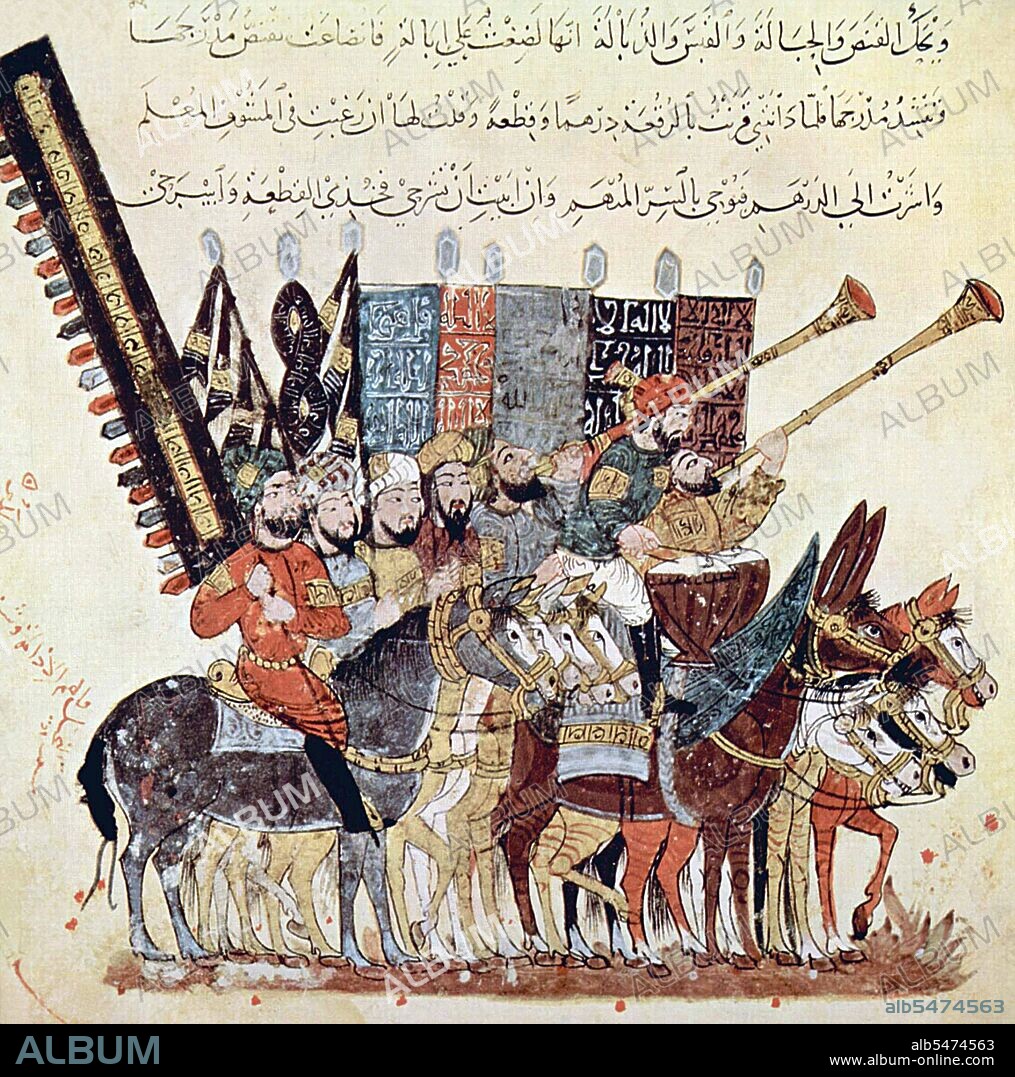The Abbasid Dynasty, once a powerhouse of culture, knowledge, and influence, faced a gradual decline marked by a series of events that unraveled its power over time. Understanding what events led to this downfall is crucial in dissecting the complex dynamics that shaped the course of history in the Islamic world. From internal strife and political fragmentation to external invasions and economic challenges, the Abbasid Dynasty struggled to maintain its authority and unity. In this blog, we will delve into the pivotal moments that heralded the decline of this illustrious dynasty, shedding light on the intricate web of factors that ultimately contributed to its unraveling.
Introduction: Understanding the Abbasid Dynasty
The Abbasid Dynasty, one of the most influential in Islamic history, spanned from 750 to 1258 AD. It succeeded the Umayyad Caliphate and was known for its advancements in various fields such as science, arts, and philosophy. The Abbasid rulers established Baghdad as their capital, creating a golden age of Islamic civilization.
Key Features of the Abbasid Dynasty
The Abbasids were known for their promotion of learning and culture, fostering an era of intellectual growth. They also centralized power with a strong bureaucracy and established a system of equality among Muslims, which helped in the expansion of the empire.
The Decline of the Abbasid Dynasty
Despite their early successes, the Abbasid Dynasty faced internal strife, external invasions, and economic challenges. These factors, combined with political corruption and the rise of powerful regional governors, led to the weakening of the dynasty over time.
By the 9th century, what events led to the decline of the Abbasid dynasty became more evident. These events included the fragmentation of the empire, increased sectarian tensions, and the sacking of Baghdad by the Mongols in 1258 AD.

Founding of the Abbasid Dynasty: Rise to Power
The Abbasid Dynasty rose to power in 750 CE after overthrowing the Umayyad Caliphate in a bloody revolution. This new dynasty was founded by Abu al-Abbas, known as al-Saffah, with the support of various dissatisfied groups, including Shia Muslims and non-Arab converts. The Abbasids claimed legitimacy through their relation to the Prophet Muhammad, emphasizing their focus on promoting Islamic unity and justice.
Revolutionary Ideals
The Abbasids sought to establish a more inclusive and meritocratic government, promising equality and justice for all Muslims. They implemented administrative reforms, centralized authority, and emphasized education and scholarship.
This period saw the flourishing of Islamic arts, sciences, and culture, contributing significantly to the Golden Age of Islam. The magnificent city of Baghdad became the Abbasid capital and a center for trade, scholarship, and innovation.
Expansion and Influence
The Abbasid Dynasty expanded its territories, incorporating diverse regions and cultures into its realm. They established diplomatic relations with other civilizations, enabling the exchange of knowledge and ideas.
At its peak, the Abbasid Caliphate was one of the most powerful and influential empires in the world, shaping the course of history through its contributions to literature, medicine, mathematics, and philosophy.
Internal Struggles and Fragmentation
As we delve into the events that led to the decline of the Abbasid Dynasty, it is crucial to acknowledge the impact of internal struggles and fragmentation. The dynasty faced relentless challenges from within, weakening its core and paving the way for its eventual downfall.
The Factionalism Phenomenon
One of the primary reasons behind the Abbasid Dynasty’s decline was the emergence of factionalism among the ruling elite. **This** fissure, **which exacerbated over time, led to internal conflicts, power struggles, and ultimately weakened the empire’s ability to govern effectively.**
Erosion of Central Authority
The erosion of central authority further compounded the internal struggles within the Abbasid Dynasty. With **various regional governors** asserting their autonomy and challenging the authority of the caliph, the empire became **increasingly fragmented** and vulnerable to external threats.

External Invasions and Wars
External invasions and wars played a pivotal role in the decline of the Abbasid Dynasty. The incessant assaults and invasions from various external forces weakened the central authority and destabilized the empire.
Impact of Mongol Invasions
The Mongol Invasions in the 13th century inflicted heavy damage on the Abbasid Dynasty, leading to widespread destruction of cities, infrastructure, and loss of life. This catastrophic event accelerated the decline of the dynasty.
Crusades and Their Consequences
The Crusades, launched by European powers, also significantly impacted the Abbasid Dynasty. The clashes between Muslim and Christian forces resulted in further destabilization and territorial losses for the Abbasids. This intensified the internal conflicts within the empire.
- The weakening of the Abbasid Dynasty allowed for the emergence of regional powers and independent states.
- The continuous warfare drained the empire’s resources and undermined its ability to govern effectively.

Economic Challenges and Decline
The economic challenges faced by the Abbasid Dynasty played a significant role in its eventual decline. The dynasty, which once flourished due to its trade networks and agricultural productivity, began to face several economic setbacks.
Financial Mismanagement
The mismanagement of state finances led to a gradual erosion of the economic stability of the Abbasid Empire. This financial instability was exacerbated by corruption within the administration.
Decline of Trade Routes
The disruption of key trade routes due to political instability and the rise of competing powers impacted the Abbasid economy. The decline in trade severely affected the empire’s revenue streams.
Cultural and Intellectual Shifts
The decline of the Abbasid Dynasty can be attributed to several cultural and intellectual shifts that took place during its reign. These shifts significantly impacted the social fabric and governance of the empire.
Emergence of New Philosophical Movements
During this period, there was a rise in new philosophical movements that challenged the traditional norms and beliefs of the Abbasid society. Thinkers like Al-Kindi and Al-Farabi introduced ideas that sparked intellectual debates across the empire.
Transformation of Art and Architecture
The transformative changes in art and architecture reflected the evolving cultural landscape of the Abbasid Dynasty. Innovations in design and aesthetics reshaped the visual identity of the empire.
Frequently Asked Questions
-
- What were the main events that led to the decline of the Abbasid Dynasty?
- The decline of the Abbasid Dynasty was caused by various factors such as internal unrest, economic turmoil, and pressure from external forces like the Mongol invasions.
-
- How did internal unrest contribute to the decline of the Abbasid Dynasty?
- Internal strife, power struggles, and revolts among different factions within the Abbasid Empire weakened the central authority and stability of the dynasty, leading to its decline.
-
- What role did economic turmoil play in the unraveling of the Abbasid Dynasty?
- Economic challenges, including financial mismanagement, inflation, and reliance on unsustainable sources of revenue, significantly impacted the economic stability of the Abbasid Empire and contributed to its decline.
-
- How did external pressures like the Mongol invasions affect the Abbasid Dynasty?
- The Mongol invasions and other external threats posed significant challenges to the Abbasid Dynasty, causing widespread destruction, loss of territory, and weakening the empire’s ability to govern effectively.
-
- Were there any cultural or intellectual factors that influenced the decline of the Abbasid Dynasty?
- Yes, cultural and intellectual stagnation, as well as a shift in focus away from patronage of arts and sciences, also played a role in the decline of the Abbasid Dynasty.
-
- When did the decline of the Abbasid Dynasty begin, and how long did it last?
- The decline of the Abbasid Dynasty began around the 9th century and continued over several centuries until the eventual fall of Baghdad in 1258 during the Mongol invasion.
Unraveling the Fate of the Abbasid Dynasty: A Lesson in Power and Decline
As we delved into the events that led to the decline of the Abbasid Dynasty, a clear picture emerged of the internal strife, external invasions, and societal changes that ultimately unraveled their power. From the devastating Mongol invasions to the rise of regional powers and the breakdown of central authority, the Abbasid Dynasty’s downfall serves as a cautionary tale of how even the mightiest empires can crumble under the weight of internal and external pressures. By understanding these historical events, we gain valuable insights into the fragility of power and the importance of adaptability and unity in the face of challenges.



